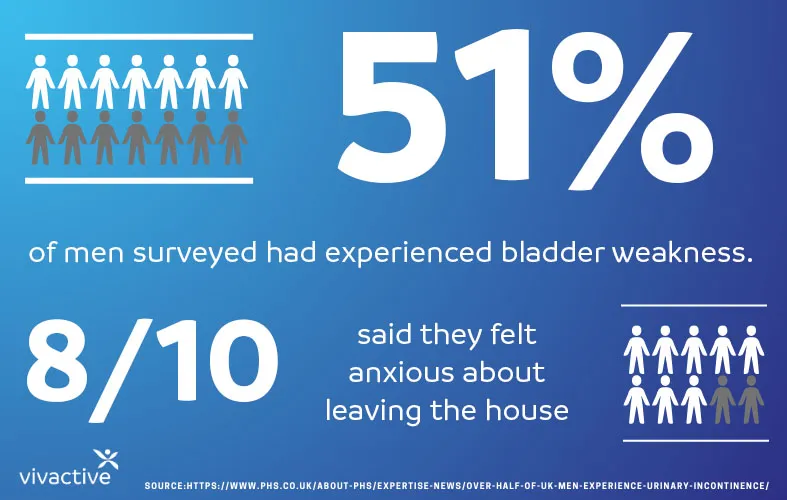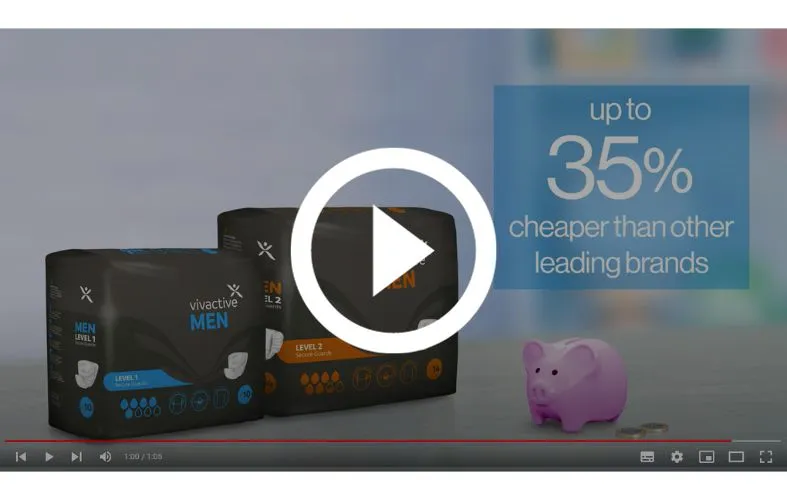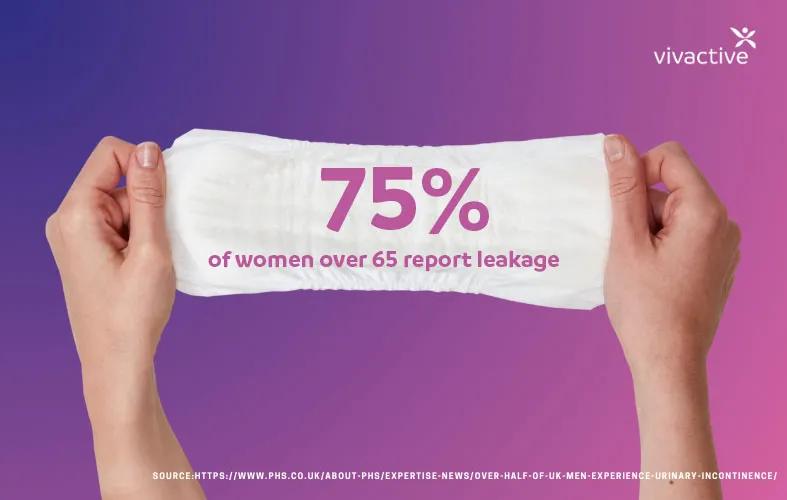
Share this page with friends
The unique differences between male and female incontinence
A lot of people don’t realise it, but bladder weakness and bowel problems affect people of all ages and genders. Incontinence isn’t a black & white issue, it can present differently to different people. In this article we’ll be looking at a few of the differences between male incontinence and female incontinence, whilst also highlighting the importance of quality incontinence products that can help.

Male Incontinence is more prevalent than you may think
PHS Group carried out a report that revealed 51% of men surveyed had experienced symptoms associated with urinary incontinence. With 8 out of 10 of those men saying it left them feeling anxious to leave the house. Nobody should have to live like that. This is one of the main reasons we started Vivactive, to deliver quality incontinence products that allow people to be confident in their own skin and get on with their lives.
Previous studies estimated that 1 in 25 men over the age of 40 will experience bladder weakness every year and 1 in 5 men experience symptoms as early as the 18-25 age bracket. The numbers are simply staggering, but nobody is talking about it.
For men, the journey of incontinence is slightly different compared to women. The primary source of bladder weakness among men comes down to the prostate, usually due to an enlarged prostate or prostate cancer. The prostate gland is located just below the bladder and plays a crucial role in a man’s urinary system. When it becomes enlarged or cancerous, it can exert pressure on the urethra, disrupting the normal flow of urine and can sometimes lead to involuntary urine leakage.
If you’re looking for a high quality incontinence solution for men, then check out Vivactive’s range of active fit underwear. They’re incontinence products geared toward men, shaped specifically with male parts in mind.

Female incontinence is much broader
Women have their own set of unique challenges when it comes to incontinence:
- Pregnancy
- Childbirth
- The menopause
During pregnancy, the foetus can put pressure on your bladder, meaning frequent use of the toilet and sometimes even urinary leakage. The pelvic floor muscles which support the bladder and urethra can weaken due to hormonal changes or due to the strain of carrying a baby. A weakened pelvic floor can result in stress incontinence, where everyday bodily functions such as coughing, sneezing or laughing can cause an accident.
Childbirth affects a woman’s entire body, including bladder control. Giving birth can stretch and weaken pelvic floor muscles, leading to an increased chance of developing incontinence. The breadth of impact varies depending on each person, but things like the size of the baby, number of deliveries and presence of complications during the birth can all contribute to the development of bladder weakness.
Lastly, the menopause. When a woman begins their menopausal journey, they can experience a decrease in oestrogen levels. This hormonal change can affect the elasticity and overall strength of the tissues in the urinary tract, leading to incontinence. The menopause used to be a bit of a taboo, but it really shouldn’t be. You might’ve noticed that it’s being talked about a lot on the TV nowadays, which is fantastic. If you’re reading this and you’re going through the menopause, keep talking about it to people, you’re doing great.
Vivactive offer industry leading female incontinence products, specifically designed with women’s shapes, bodies and challenges in mind. With Vivactive, you can pick up best-in-class protection from leakage without the extortionate supermarket price tag.

The shared experiences
While male and female incontinence have their differences, there are also common threads that bind them. Both men and women can experience a combination of stress and urgency incontinence. Plus, there are neurological conditions, like Parkinson's disease or strokes, that can lead to a loss of bladder control; these conditions can affect everyone.
The quest for a quality incontinence product
Among the unique incontinence challenges faced by all genders, there is one thing that connects them. They’re being overcharged for their incontinence items. The supermarkets are putting a massive premium on incontinence products.
We’re here to disrupt the industry with incontinence products that offer the same protection that you might expect from the high street brands, at a far lower cost. Our online only approach means they can deliver the same high quality that you’re used to, without the eye-watering price tag.
Quality is a cornerstone of the Vivactive ethos. We’re committed to providing exceptional quality, with great customer service, to give you confidence and peace of mind throughout the day. Whether you’re in the park with the grandkids, doing the weekly shop or just going for a long walk outdoors, we’ve got your back.





